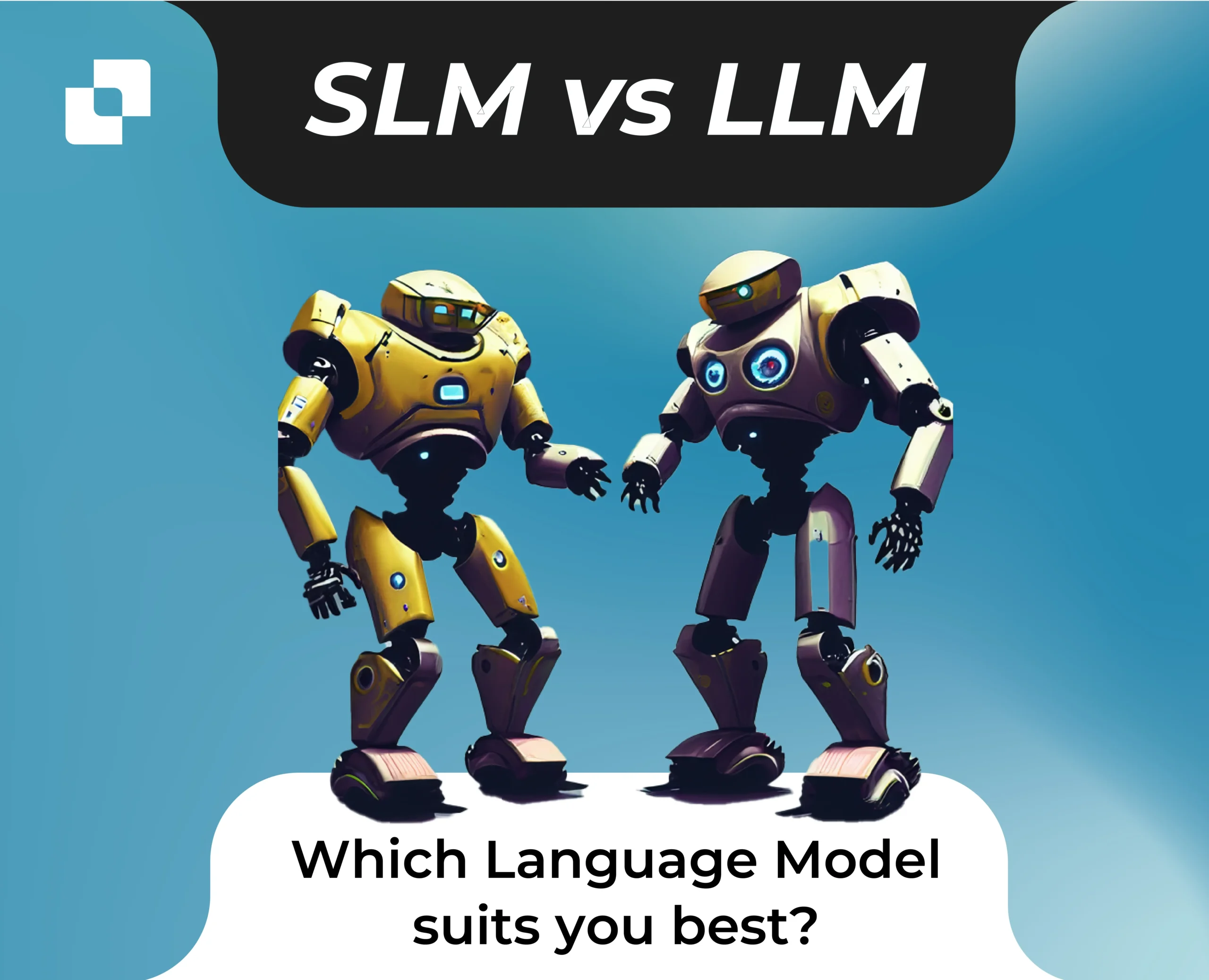In the world of artificial intelligence (AI), many technologies are available to companies today to make processes more efficient and drive innovation. Language models play a central role in this: they understand and generate language – and thus open up numerous possible applications. But which model is right for your company? Is bigger always better, or is it sometimes the case that less is more?
In this article, we show you what is important when choosing the right model – and what specific added value language models can offer.
Small language models (SLMs) have a comparatively small number of parameters, usually in the millions. They are specialised in certain topics or tasks and can be trained in a targeted manner.
The benefits at a glance:
A typical use case:
A company regularly receives similar requests for technical support. An SLM that has been specifically trained for these topics can respond automatically and reliably – and thus noticeably reduce the workload of service staff.
For companies with specialised requirements and a focus on efficiency and cost control, small language models can be the optimal solution.
Large language models (LLMs) work with millions to billions of parameters. They have usually been pre-trained on large amounts of data and can therefore capture complex relationships and react flexibly to different requirements.
Typical benefits:
A practical example: A marketing team is planning a new campaign for various target groups. An LLM can not only help with formulation, but also generate ideas, personalise content and support market analyses.
If you want to cover many different requirements, you are well advised to use a large language model – especially if the focus is on innovation and depth of content.
Ob groß oder klein – beide Modelltypen helfen dabei, Prozesse zu automatisieren, Zeit zu sparen und fundiertere Entscheidungen zu treffen. Der Unterschied liegt vor allem in der Komplexität und im Anwendungsspektrum.
Beispiele aus der Praxis:
Entscheidungsgrundlagen verbessern: Dank ihrer Fähigkeit, große Datenmengen zu analysieren, helfen LLMs bei strategischen Entscheidungen.
Regardless of the size of the model, success stands and falls with the quality of the data. This is because only well-structured, relevant data enables a model to work reliably.
Size alone is not decisive – it depends more on what your company needs. Small language models are ideal for focussed, resource-saving applications. Large models offer maximum flexibility and deeper insights.
But no matter which approach you choose: No language model can realise its full potential without high-quality data. Making targeted investments here lays the foundation for greater efficiency, better decisions – and long-term business success.

Image credits: Header- & festured image by FELLOWPRO
Share: